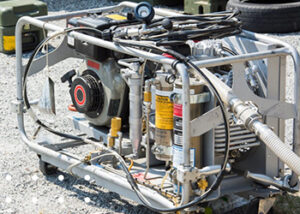Original article published by OSHA
As winter surges, OSHA reminds employers of carbon monoxiderisks when using portable generators, other equipment indoors

WASHINGTON – As frigid temperatures and sleet, ice and snow blanket states from the south to the northeast, millions of Americans are facing power outages. As many turn to portable generators and other fuel-burning equipment for electricity and warmth, the U.S. Department of Labor’s Occupational Safety and Health Administration urges employers to take appropriate precautions to protect workers from carbon monoxide exposures in enclosed spaces.
Carbon monoxide is a colorless, odorless and toxic gas that – during prolonged or high exposures – can cause headaches, dizziness, drowsiness, nausea, vomiting or tightness across the chest. Severe overexposure can lead to neurological damage, coma and even death.
Employers and workers who use fuel-burning equipment indoors or in semi-enclosed spaces with inadequate ventilation must be aware of the dangers of carbon monoxide poisoning, and the risks increase during winter months in indoor areas tightly sealed to block out cold temperatures and wind.
In addition to portable generators and similar equipment, carbon monoxide is produced when fuel combusts in powered tools, compressors, pumps, welding equipment, furnaces, forklifts and motorized vehicles.
To reduce the risk of workplace carbon monoxide exposure, employers should install an effective ventilation system, avoid the use of fuel-burning equipment and vehicles in enclosed or partially enclosed spaces, and use carbon monoxide detectors with alarms in areas where the hazard may exist. Employers should also take other precautions as outlined in OSHA’s Carbon Monoxide Fact Sheet. Additional OSHA resources include videos (in English and Spanish), QuickCards (in English and Spanish) and a fact sheet on portable generator safety.
McCraren Compliance offers many opportunities in safety training to help circumvent accidents. Please take a moment to visit our calendar of classes to see what we can do to help your safety measures from training to consulting.